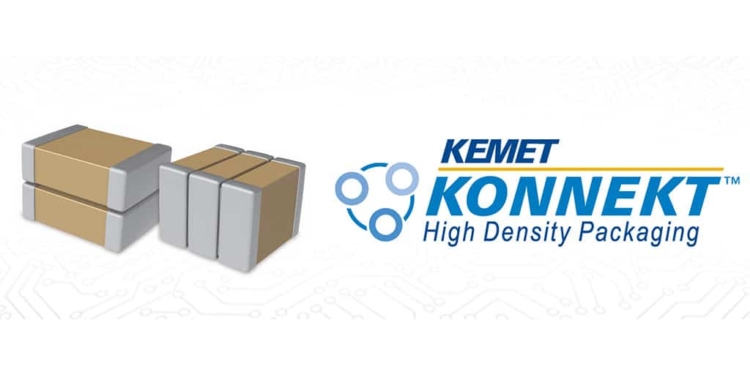Source: Kemet Engineering Center article
KEMET KONNEKT™ package allows two to four ceramic capacitors to be stacked vertically or horizontally while retaining the integrity of the part. It uses transient liquid phase sintering (TLPS) technology to bond component terminations together. The KONNEKT™ U2J capacitors can be used in both orientations, thus minimizing the component footprint, while maximizing the bulk capacitance of a stacked MLCC with design flexibility in mind.
Our team began the process of brainstorming what would later be labeled as our KONNEKT™ U2J ceramic capacitor. Similar to the construction of high rises and skyscrapers in major metropolitan areas, one creative and commonly used answer for space limitation is to build from the floor up in a vertical or standard orientation. Because of the requirement of the application and space limits, our stacked MLCC solution was placed in a horizontal configuration, known as a “low-loss orientation.” The KONNEKT™ U2J product can be used in both orientations, thus minimizing the component footprint, while maximizing the bulk capacitance of a stacked MLCC with design flexibility in mind.

KONNEKT U2J low-Loss and standard orientation
KONNEKT™ Packaging Technology
Our patented KONNEKT™ package allows two to four ceramic capacitors to be stacked vertically or horizontally while retaining the integrity of the part. It uses transient liquid phase sintering (TLPS) technology to bond component terminations together. TLPS is a metal matrix composite bond that features copper-tin material and is used as a replacement for solder. The unique composite uses tin which is a low-temperature reaction metal at 300°C, with copper as the high melting point metal at 1085°C to form a reacted metal matrix, creating a distinct advantage over the use of solder. The TLPS forms a metallurgical bond between two surfaces, in this case, our U2J MLCC.

TLPS is reacted metal matrix that forms a metallurgical bond between 2 surfaces, in this case, two MLCCs
Why U2J?
We designed the solution for our customer using our U2J ceramics because of its Class 1 properties. Our U2J ceramic capacitors are extremely stable and retain over 99% of nominal capacitance at full rated voltage. When referenced to ambient temperature, U2J ceramic capacitors provide a predictable and linear change in capacitance. Additionally, U2J ceramic capacitors extend the available capacitance of Class 1 MLCCs into a range previously only available to Class II dielectric materials such as X5R and X7R. Combined with KONNEKT™ packaging technology, this little SMD offers bulk capacitance with extremely high ripple current capability.

Ripple current measurements performed at 85°C with a peak capacitor temperature of 95°C. Samples mounted to heat sink with no forced air cooling. Maximum ambient and self-heating cannot exceed 125°C.
Positive Results
This KONNEKT™ U2J solution was designed into a resonant converter (along with our power inductor technology) that resulted in a 98.92% conversion efficiency (650 W), which is critical for to maintain their low operating costs. We have received nothing but praise over this solution and will look to release more products utilizing this technology into the market. Typical applications for this product include wide bandgap (WBG), silicon carbide (SiC) and gallium nitride (GaN) systems, data centers, and switched tank converters.


































